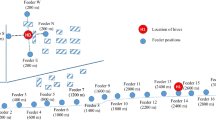Abstract.
For more than 50 years, investigators of the honey bee's waggle dance have reported that richer food sources seem to elicit longer-lasting and livelier dances than do poorer sources. However, no one had measured both dance duration and liveliness as a function of food-source profitability. Using video analysis, we found that nectar foragers adjust both the duration (D) and the rate (R) of waggle-run production, thereby tuning the number of waggle runs produced per foraging trip (W, where W=DR) as a function of food-source profitability. Both duration and rate of waggle-run production increase with rising food-source profitability. Moreover, we found that a dancing bee adjusts the rate of waggle-run production (R) in relation to food-source profitability by adjusting the mean duration of the return-phase portion of her dance circuits. This finding raises the possibility that bees can use return-phase duration as an index of food-source profitability. Finally, dances having different levels of liveliness have different mean durations of the return phase, indicating that dance liveliness can be quantified in terms of the time interval between consecutive waggle runs.
Similar content being viewed by others
Author information
Authors and Affiliations
Additional information
Electronic Publication
Rights and permissions
About this article
Cite this article
Seeley, T., Mikheyev, A. & Pagano, G. Dancing bees tune both duration and rate of waggle-run production in relation to nectar-source profitability. J Comp Physiol A 186, 813–819 (2000). https://doi.org/10.1007/s003590000134
Accepted:
Issue Date:
DOI: https://doi.org/10.1007/s003590000134




